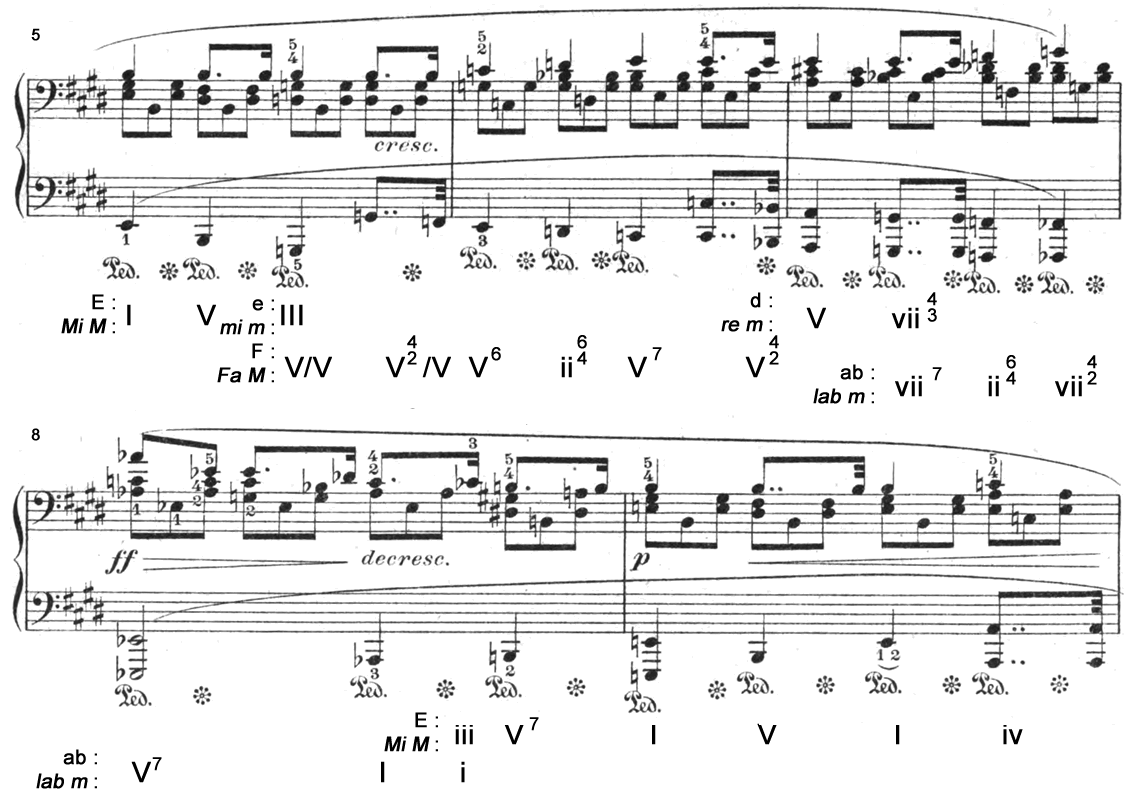Prelude No. 9 in E Major, Measures 5 to 8
José Rodríguez Alvira
Second phrase, measures 5 to 8
In the fifth measure the harmonic scheme gets more interesting:
| Measure 5, 2nd and 3rd beat | E major's V degree chord is followed by a G major chord. G major is the III degree of E minor (modal interchange). |
| Measure 5, 4th beat | G major is used as a dominant chord. |
| Measure 6 | C major is used as an F major chord and it is followed by a G minor chord (2nd beat) before the F major dominant chord reappears in the 3rd measure. |
| Measure 7, beats 1 and 2 | The dominant chord of F major resolves to an A major chord and is followed by a vii degree chord of D minor. |
| Measure 7, beats 2 and 4 | D minor's vii degree (C# - E - G - Bb) is used as an Ab's vii degree (G - Bb - Db - Fb) and is followed by an Ab's ii and vii degrees |
| Measure 8 | Cadence to Ab flat major key (3rd beat). Ab major becomes an Ab minor chord and it is used as E major iii degree (Ab = G#) followed by E major dominant chord. |
Three modulation methods are used by Chopin in these four measures:
Modal Interchange - using a chord from the parallel minor key. G major is E minor's III degree chord and it is used as V/V chord of F Major. Modal interchange is also used to transform Ab major to an Ab minor chord (G# minor) that allows the chord to be used as an E major iii degree chord.
Irregular resolution or common tone - the F major dominant chord is followed by an A major chord (both chords share the note E).
Diminished chord - The D minor vii chord (C# - E - G - Bb) is used as Ab's vii degree (G - Bb- Db - Fb). Db = C# and Fb = E.
© 2018 José Rodríguez Alvira. Published teoria.com
